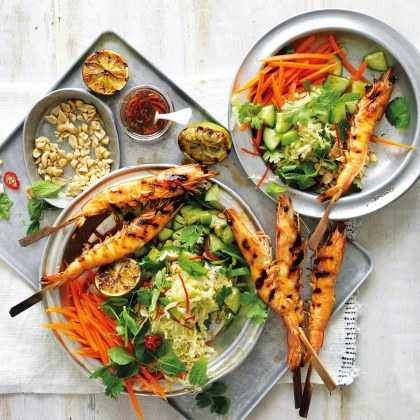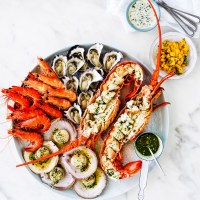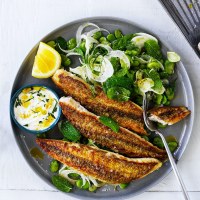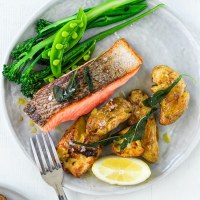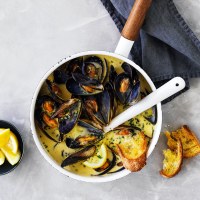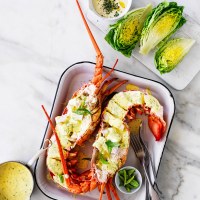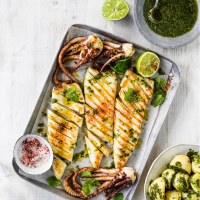How to store and freeze fresh seafood
Eating fresh seafood is a wonderful experience - from beautifully flaky and light white fish, to the briney pop of a plump prawn, to the delicate sweetness of crabs or scallops. We're lucky to have access to top quality seafood in Australia, but if stored incorrectly, seafood can degrade easily and lose its flavour and quality. Find out how you can easily store or freeze your seafood to keep it as fresh as possible.
When to buy seafood for Good Friday
Good Friday is one of the busiest days of the year for fishmongers! You can purchase your fish directly from the fishmonger on Good Friday, or make an order ahead of time to skip the queue. Find your local fishmonger using this handy
Fish Finder.
If you're short on time, you can purchase good quality seafood up to two days before you plan to eat it, excluding sashimi which should be eaten within one day.
Buy or pick up your seafood right before you go home to reduce the amount of time it's out of the fridge. Put your seafood into a chiller bag or ask your fishmonger for a bag of ice. Keep the seafood in the cabin of the car instead of the boot, and if it's hot put the airconditioning on. Never leave seafood in the car, and don't leave it out of the refrigerator for longer than an hour.
Top tip: Every hour out of the fridge takes a whole day’s shelf life from seafood!
How to store seafood in the fridge
Fish fillets, whole fish, cooked and green prawns, squid and octopus will keep better with these tips. Live crustaceans and mussels, pippis and clams are treated slightly differently.
1. Remove seafood from all packaging - So it will cool faster. Packaging insulates the seafood, so if kept on it will take longer for it to cool below 5°C.
2. Place and cover on plate or tray - Cover with damp paper towel or chux and then wrap tightly with plastic wrap or cover in an airtight container. This will prevent your seafood from drying out and prevent fishy odours escaping.
3. Position in the coolest part of your fridge - Usually the bottom half of the refrigerator.
How to store live crabs and crustaceans
Place in a high-walled container or bucket and cover with a damp cloth. Place in a cool, dark room . Make sure the cloth remains damp.
Storing mussels, pippis and clams
If in a sealed bag, keep in packaging and place in the warmest part of the refrigerator, either top shelves or the crisper. If purchased loose, rinse in cold water and leave the container ¼ full of fresh water. Cover with a damp cloth and place in the same position.
How long does seafood last in the fridge?
Seafood has a short shelf-life in the fridge, use the guide below to determine how soon you should use your seafood.
Scaled and gutted whole fish - use within 2-3 days
Fish fillets - use within 1-2 days
Squid, cuttlefish and octopus, rinsed and cleaned - use within 2-3 days
Green prawns - use within 1-2 days
Sashimi - consume within 24 hours
Oysters - consume within 2-3 days
Live and uncooked crabs - consume as soon as possible
Mussels, pippis and clams - consume as soon as possible
Cooked prawns and crabs - use within 2-3 days
Smoked fish - check use-by date, use within one week of opening package
How to freeze fresh seafood
Freezing seafood means you can bulk buy what is cheap and in season and take advantage of lower prices. If purchasing seafood to freeze, prepare and freeze it as soon as possible.
Seafood is easy to freeze, but it can be prone to freezer burn. However, if you store it properly you can reduce this risk. Follow the steps below to freeze your seafood:
1. Wrap tightly in cling wrap - removing as much air as possible. For prawns, place directly inside sealable container and cover with water.
2. Place in an airtight, freezer-safe container.
3. Label and date.
4. Freeze.
Seafood freezes well for 3-6 months. Check the guide below to see how long your seafood will last.
NOTE: for the best results, the freezer temperature must reach -18°C and not fluctuate.
If you have a vacuum sealer, use this to seal your seafood before freezing and you will have even better results.
How long can you freeze seafood?
Follow the guide below to get the best out of your seafood. Please note all seafood needs to be gutted and cleaned unless advised separately.
Non-oily fish – fillets and whole fish – 6 months
Oily fish – fillets and whole fish – 3 months
Mussels, clams and pippis – meat only – 3 months
Squid, cuttlefish and octopus – 3 months
Prawns – whole, shell on (we don't recommend freezing peeled prawns at home) – 3 months
Other crustaceans (lobster, bugs, crabs) – 3 months
How to defrost seafood
Seafood takes a while to defrost, so plan ahead.
- Unwrap seafood and place into a drip tray inside a container. Alternatively, place a cake cooling rack over a baking tray and place seafood over the top. Cover with cling wrap to stop it drying out. Defrost in fridge overnight.
- If your seafood is vacuum sealed, add to a sinkful of room temperature tap water and leave for one hour.
- Pat seafood dry with paper towel and use immediately.
Use these tips to prolong the life of your seafood and you'll be rewarded with delicious meals every time!
Seafood recipes
We have plenty of easy and delicious seafood recipes below, or click for a collection of seafood recipes thanks to Great Australian Seafood.


